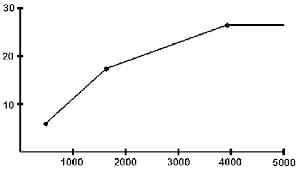GlenwoodCJ7
New member
Tuning and idle?
SO I finally got around to deleting the smog junk out of the jeep and rewiring the whole thing due to the PO screwing everything up. Anyhow, I am trying to get it tuned up and a few things are causing my OCD to ramp up. To start with the tuning, I began to go after setting the total timing but found the PO had already set the timing curve on it and installed different springs in the dizzy (Mallory Unilite) and it only has about 10* mechanical advance with the vac unplugged. I have the timing set at 14* BTDC for high elevation but wondering if it needs to be set higher since the mechanical advance can only get it to 24-25* of advance. I have heard 32-34 would be optimum. Would I need to start from square one and remove the springs from the dizzy and check the total timing? I was thinking if there is only 10* of advance I could simply advance it to say 20* BTDC. Is that crazy :???:
Secondly but more important right now is trying to get it to idle properly. I am idling around 700 but it seems like it's stuttering and what is strange is that I can disconnect the IAC and the idle really does not change but the stuttering goes away. I have replaced the IAC and nothing changed. I have check for vacuum leaks and cannot find any. When I removed the smog, I left the EGR valve hooked up along with the PCV valve and the charcoal canister.
Would love any input
The setup
1981 CJ7
AMC 360
Howell TBI
Crane cam (Mild)
Mallory Unilite dizzy
MSD high vibration coil
SO I finally got around to deleting the smog junk out of the jeep and rewiring the whole thing due to the PO screwing everything up. Anyhow, I am trying to get it tuned up and a few things are causing my OCD to ramp up. To start with the tuning, I began to go after setting the total timing but found the PO had already set the timing curve on it and installed different springs in the dizzy (Mallory Unilite) and it only has about 10* mechanical advance with the vac unplugged. I have the timing set at 14* BTDC for high elevation but wondering if it needs to be set higher since the mechanical advance can only get it to 24-25* of advance. I have heard 32-34 would be optimum. Would I need to start from square one and remove the springs from the dizzy and check the total timing? I was thinking if there is only 10* of advance I could simply advance it to say 20* BTDC. Is that crazy :???:
Secondly but more important right now is trying to get it to idle properly. I am idling around 700 but it seems like it's stuttering and what is strange is that I can disconnect the IAC and the idle really does not change but the stuttering goes away. I have replaced the IAC and nothing changed. I have check for vacuum leaks and cannot find any. When I removed the smog, I left the EGR valve hooked up along with the PCV valve and the charcoal canister.
Would love any input
The setup
1981 CJ7
AMC 360
Howell TBI
Crane cam (Mild)
Mallory Unilite dizzy
MSD high vibration coil
Last edited:

